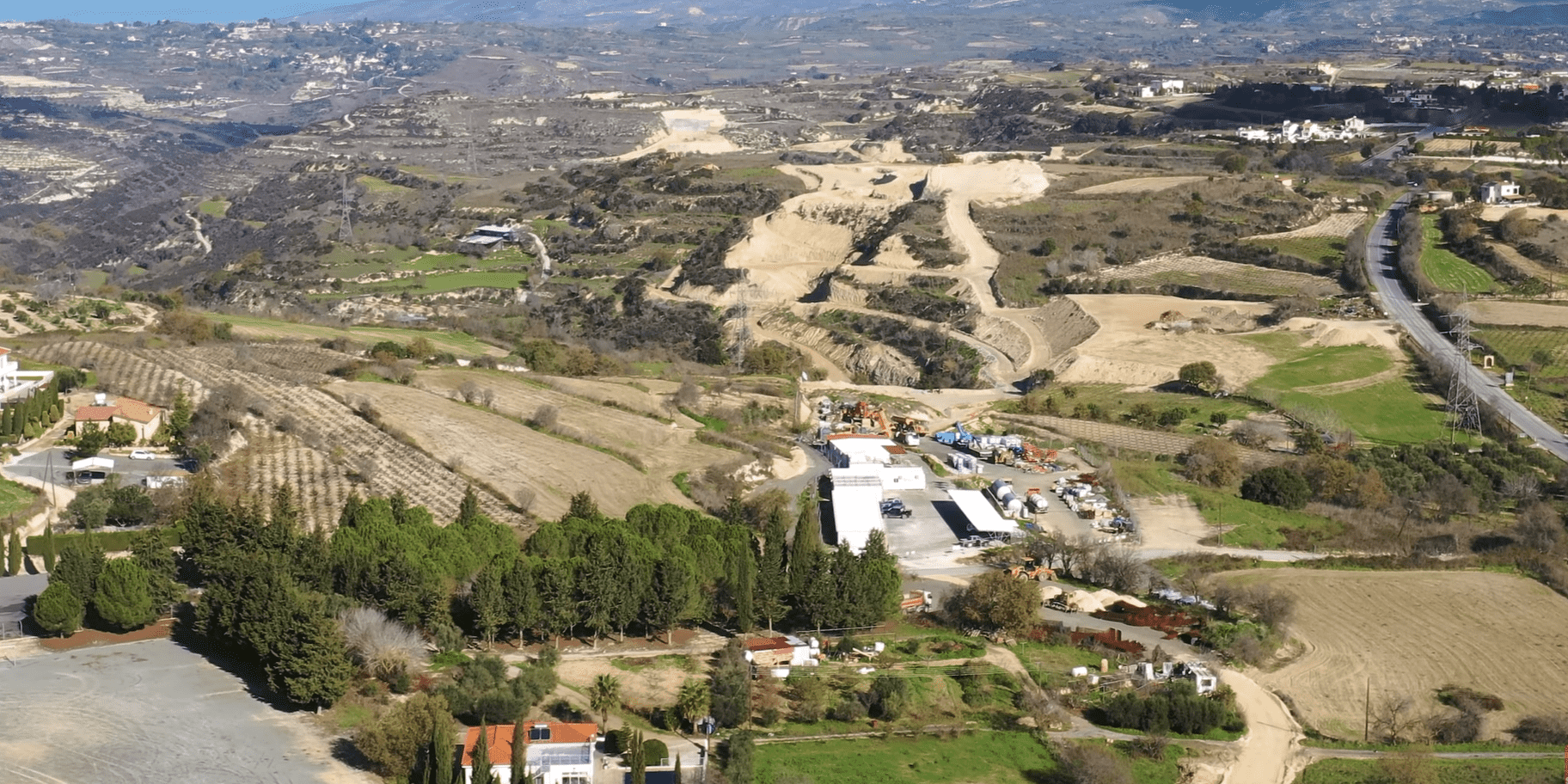The Paphos–Polis motorway is an important project for Cyprus. It started because people needed better roads. Right now, the road from Paphos to Polis is 90 kilometers long and winding, which makes it slow and dangerous. This new motorway will be much faster and safer, with modern roads, tunnels, and viaducts in Cyprus. It will also reduce traffic on the old roads.
Not only will the new road make travel easier, but it will also help the economy. It will make it easier for tourists to visit places and for local businesses to get customers. Plus, it will create new jobs in the region. Let's look at what was promised with the project and where it stands today, highlighting its role in Boosting Cyprus' Economy.
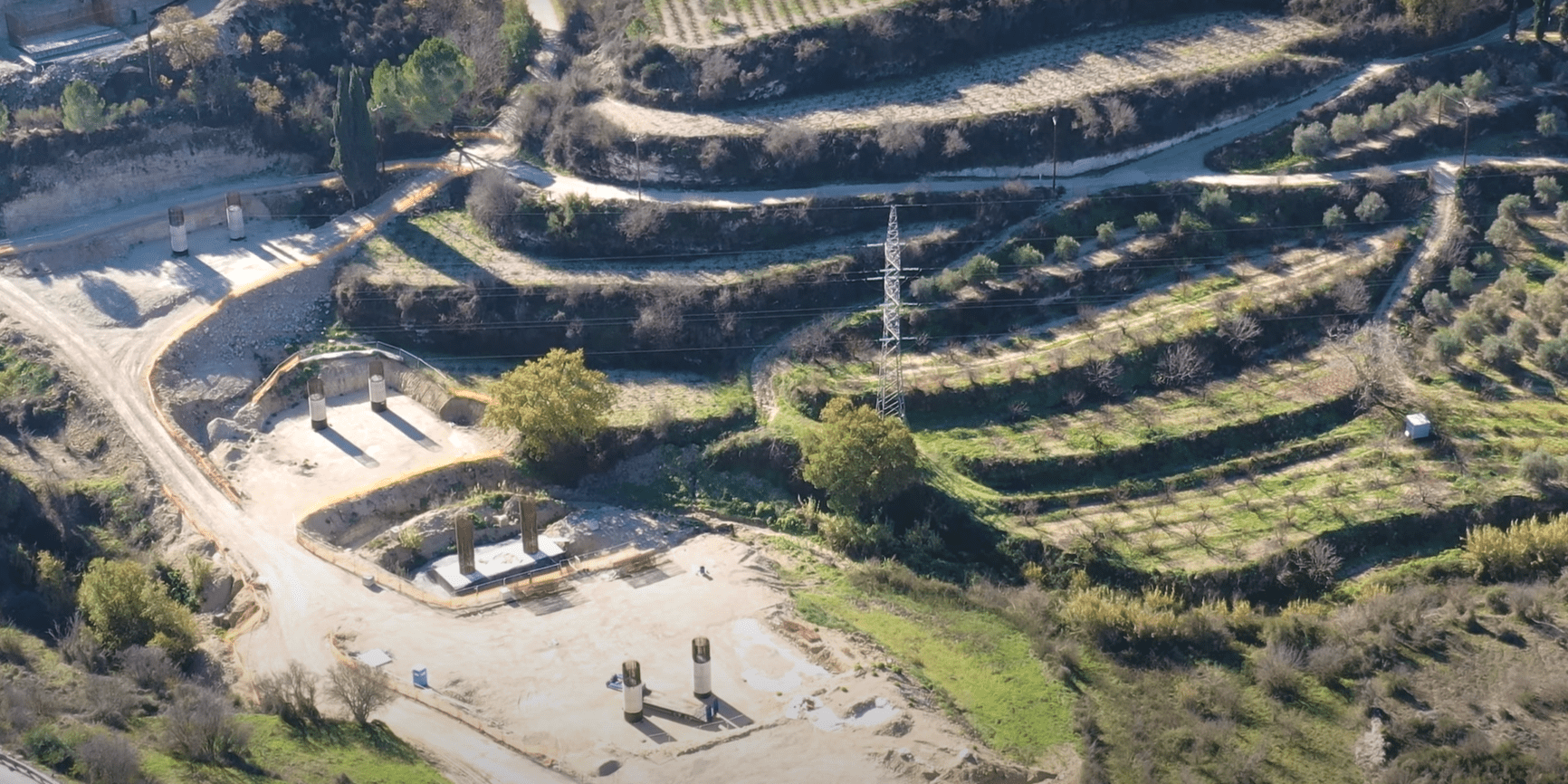
What’s Driving the Paphos–Polis Motorway Project?
Construction of the new motorway in Cyprus began in July 2022, with funding from the European Union and the Cyprus government. The project is being developed in phases, with an initial section between Ayia Marinouda and Stroumpi costing €86.8 million. Cyprus' Transport Minister Alexis Vafeades has confirmed that the project is expected to be finished in three years, although some experts believe this timeline could be delayed.
Paphos–Polis Motorway Project Details
Let's turn to Cyprus Mail and take some figures and insights. The new Paphos–Polis motorway will span 31 kilometers, with the first 15.5 kilometers already under construction, connecting Paphos to Stroumpi. The project aims to improve regional connectivity in Cyprus and make travel safer. It will feature modern infrastructure, including tunnels to bypass winding mountain roads, viaducts to bridge valleys, and new junctions for better access.
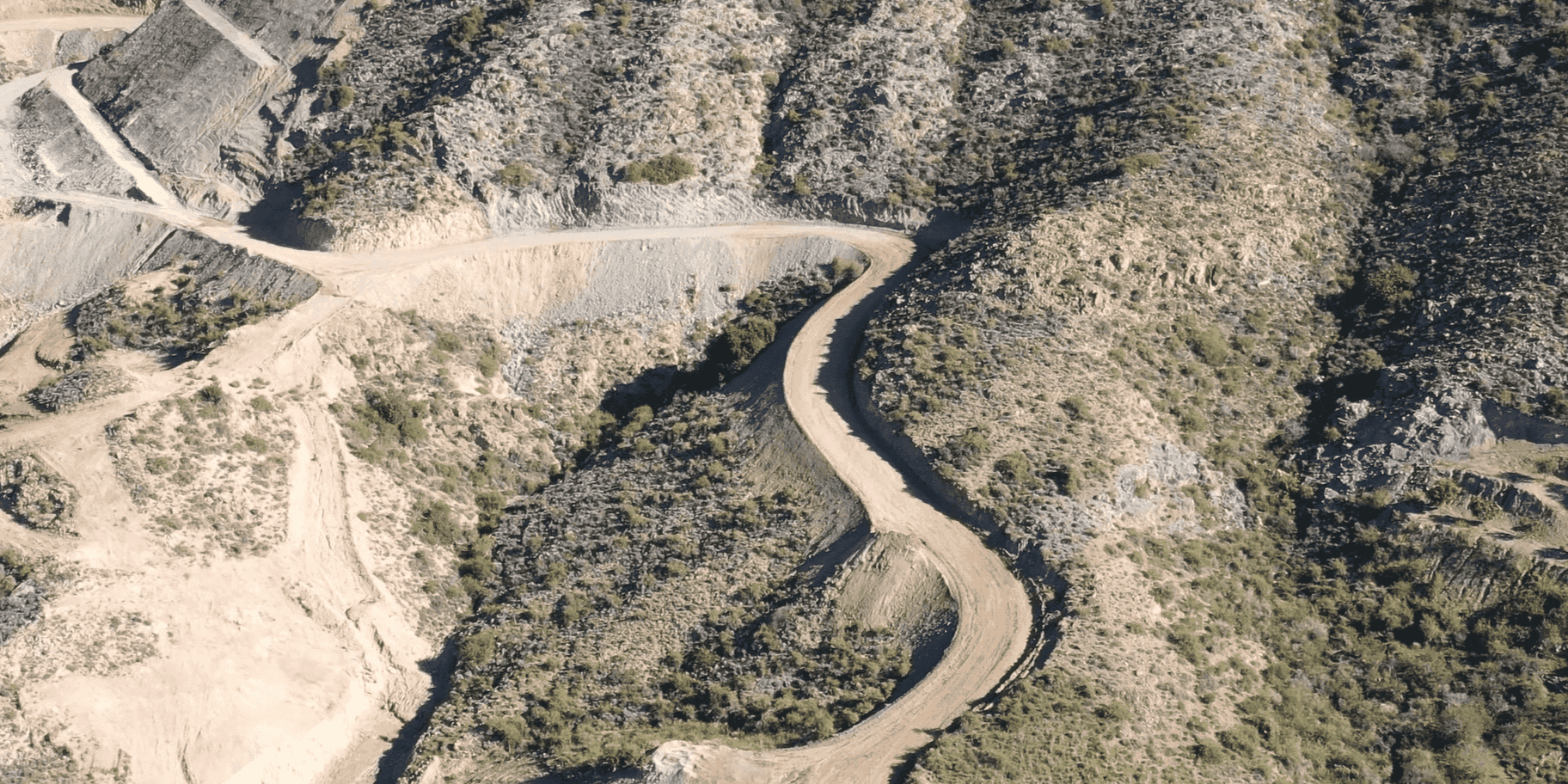
Additionally, the motorway will include environmental protection features, like wildlife crossings and noise barriers. Better lighting and markings will enhance safety, especially in challenging areas. Once completed, the motorway is expected to cut travel time between Paphos and Polis by about 30 minutes, significantly improving regional mobility.
Main Objectives of the Project
As reported by Knews, the new motorway has several key objectives:
- Enhancing Road Safety: By easing congestion and providing better road infrastructure, the motorway will improve safety for both residents and tourists.
- Increasing Accessibility: The new route will make remote areas, such as Polis and the Akamas Peninsula, easier to reach, effectively connecting communities.
- Improving Travel Efficiency: The motorway will cut the travel time between Paphos and Polis by nearly 30 minutes, making journeys quicker and smoother.
- Environmental Considerations: The new motorway design includes measures to minimize environmental impact while maintaining the region's scenic value.
- Supporting Quality of Life: Reduced traffic and improved road conditions will make traveling more comfortable and less stressful for everyone
Route Description and Technical Specifications
The Paphos–Polis motorway, designed by leading Cyprus travel infrastructure architects and engineers, integrates modern engineering to ensure smooth travel across challenging terrain while enhancing safety and connectivity.
Route Alignment
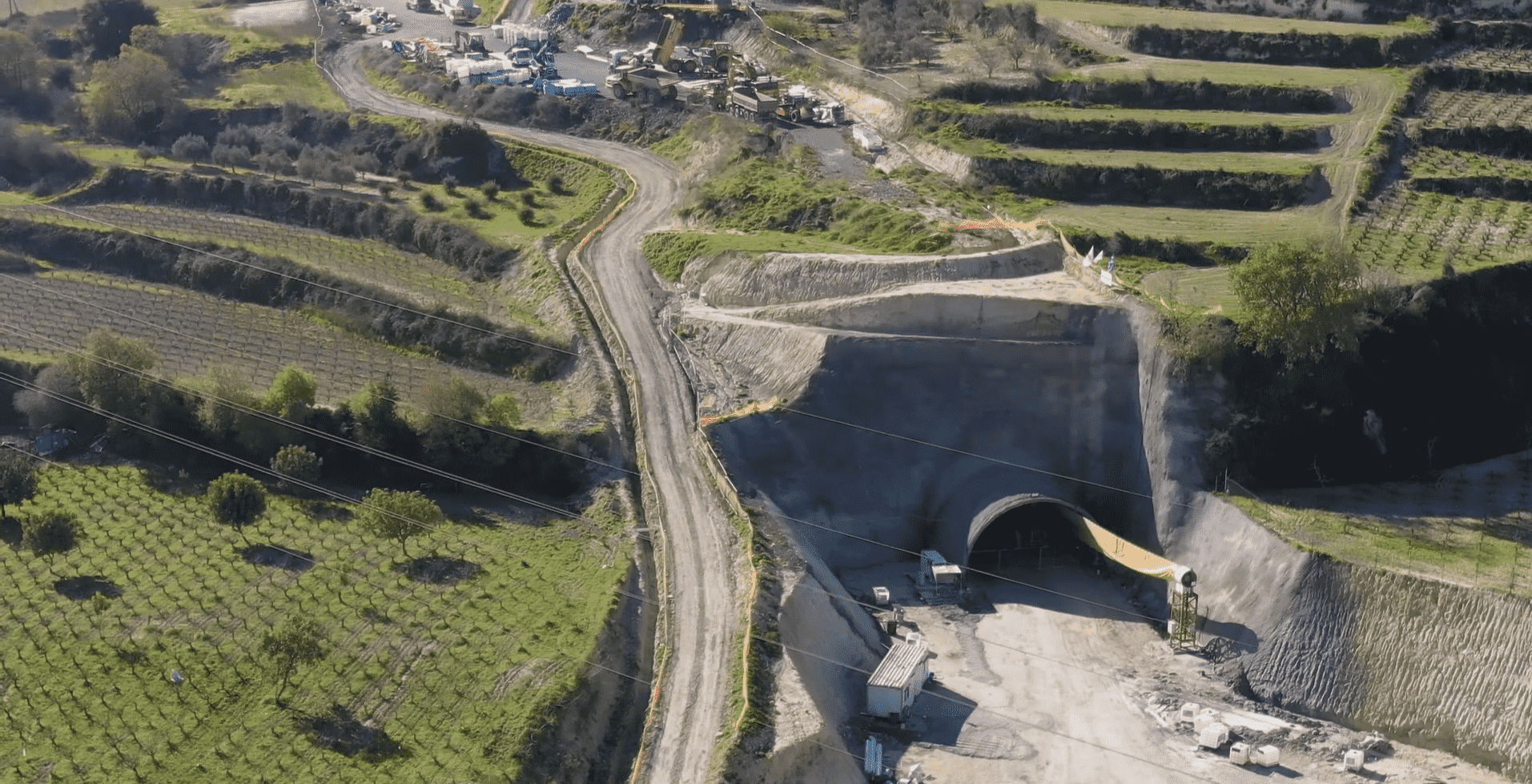
The Paphos–Polis motorway starts at the Agia Marinouda interchange near Paphos and travels north toward Polis, passing through villages like Marathounta, Tsada, and Stroumpi. This route avoids the winding B7 road, improving access to over 20 rural villages and tourist destinations like the Akamas Peninsula.
Technical Features
To navigate the challenging terrain and improve travel efficiency, the motorway will incorporate the following infrastructure:
- Tunnels: There will be two main tunnels near Kallepia and Stroumpi, totaling 3.5 kilometers. These tunnels will help bypass hazardous mountain roads, providing drivers with a safer and faster route.
- Viaducts (Bridges): By Paphos Life, the motorway will feature seven viaducts with a combined length of over 2 kilometers. These bridges will span valleys and lowlands, enhancing the smoothness of the drive. Notable viaduct locations include the areas near Tsada and Stroumpi, where steep terrain makes bridging essential.
- Junctions: The first phase of the motorway will include four major junctions, improving connectivity for nearby villages and tourist spots. These junctions will be located at Agia Marinouda, Tsada, Stroumpi, and Polemi, ensuring easier entry and exit points for travelers.
These features are necessary to navigate the region’s tough terrain and make travel safer and more efficient.
Current Progress and Timeline
The construction of the Paphos–Polis motorway, a significant step in enhancing transport infrastructure in Cyprus, has achieved notable milestones. However, progress hasn’t been without challenges, resulting in delays and revised completion dates.
Construction Milestones

The first phase of road construction in Cyprus for the motorway began in July 2022. This initial stretch covers 15.5 km between Paphos and Stroumpi. Paphos Life gladly informed сabout early progress, including major earthworks, preparing sites for tunnels, and laying foundations for the bridges.
Key Achievements
Visible progress emerged as tunnel excavation advanced between Kallepia and Stroumpi, offering safer alternatives to the hazardous mountain roads. Simultaneously, work began on bridge supports near Stroumpi, critical for traversing deep valleys and maintaining smooth travel routes. These achievements marked important steps in modernizing transport infrastructure in Cyprus.
Reasons for Delays and Revised Timeline
Despite initial success, financial disputes with the main contractor caused significant delays. According to the Sigmalive report, the government terminated the contract by November 2024 due to slow progress and unresolved funding issues. These setbacks underscored the complexities of road construction in Cyprus, particularly the challenges of navigating challenging terrain and contractor difficulties.
As a result, Transport Minister Alexis Vafeades announced a new completion target of November 2027. A €3.5 million contract was awarded to upgrade the existing Paphos–Polis road to mitigate immediate travel issues. Work on these improvements will begin in January 2025 and take 52 weeks.
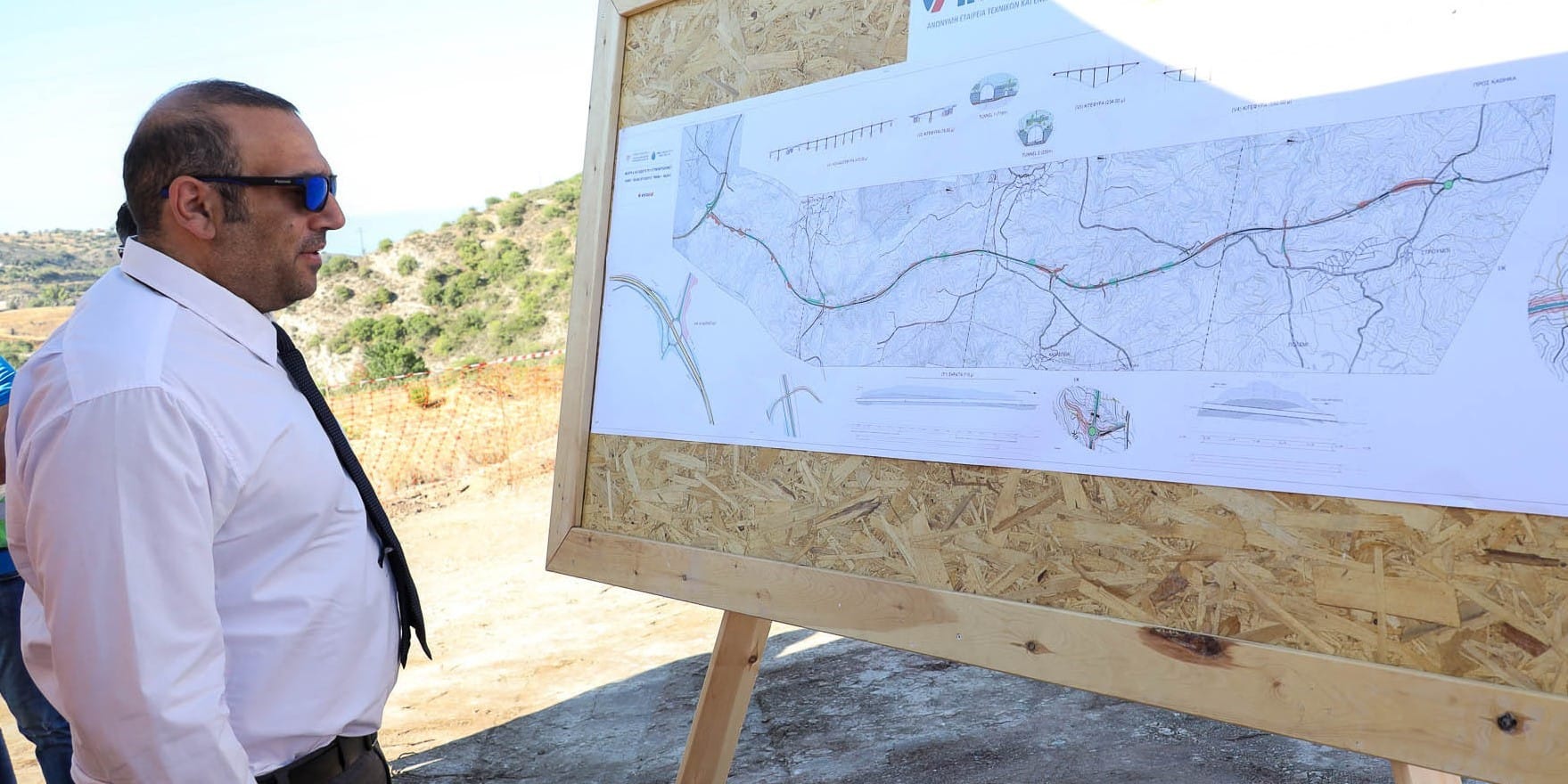
While the revised timeline reflects the hurdles, the commitment to completing this vital motorway remains strong. It will ensure improved transport infrastructure in Cyprus and enhance regional connectivity for years.
Environmental and Social Considerations
Building a new road always impacts the environment. The Paphos–Polis motorway will pass through forests, farmland, and mountains, so taking care of the natural surroundings while the road is being built is crucial. Every new road project in Cyprus considers these environmental factors to ensure that progress doesn’t harm nature.
Environmental Measures:
Here are the key steps being taken to minimize the impact that Knews knows and shares with us:
- Wildlife Protection: Wildlife crossings will be built to help animals move safely across the road, especially around areas like Kallepia and Stroumpi, where local wildlife is abundant. This will help protect Cyprus’ diverse species and ensure they are not disturbed by the new road.
- Eco-Friendly Materials: The construction will use recycled materials like asphalt and eco-friendly concrete, reducing the overall environmental footprint of the project. This is part of a wider effort in Cyprus road development to make projects more sustainable and green.
- Noise Barriers: Noise-reducing barriers will be set up to reduce noise in nearby villages, especially in places like Marathounta and Tsada. This will mean less sound pollution for locals, helping to maintain the peaceful environment around these areas.
How Local Communities Will Benefit:
The new motorway is set to bring a lot of positives to the surrounding communities:
- Better Access: Villages like Tsada, Stroumpi, and Polemi will be much easier to reach. Plus, tourists will have a smoother trip to places like the Akamas Peninsula, boosting local businesses. Improved accessibility is a major goal in new road projects in Cyprus.
- Less Traffic: About 5,000 vehicles travel on the old B7 road daily, causing congestion. The new motorway will reduce traffic by up to 40%, making local roads safer and more pleasant for residents.
Overall, by using eco-friendly materials and protecting wildlife, this project aims to balance development and nature, fitting into the ongoing efforts in Cyprus road development to build better, greener infrastructure.
Future Prospects and Economic Benefits
The economic impact of the Paphos–Polis motorway is expected to be significant, contributing greatly to both the local economy and tourism. The new road will catalyze growth, improving connectivity and accessibility in the region.
Economic Impact of Paphos–Polis Motorway
The Paphos–Polis motorway is expected to significantly boost the local economy, offering key benefits in various sectors. Here are some of the main economic impacts:
- Job Creation: According to Financial Mirror, the construction and operational phases of the motorway are projected to create hundreds of new jobs. Around 1,000 direct and indirect jobs are expected to be generatedduring construction.
- Local Business Growth: Improved access will result in a 15% increase in customer traffic for local businesses like restaurants, hotels, and retail stores. This will contribute to a significant boost in local revenues, with some reports predicting up to a 5% annual growth in regional business revenue.
- Infrastructure Development: The project will provide long-term benefits through improved transportation links. The reduced travel time — 30 minutes less between Paphos and Polis — will make the region more attractive to investors, particularly in sectors like hospitality and retail.
- Economic Diversification: The enhanced accessibility will open the area for new business opportunities, fostering innovation and a wider variety of economic activities. This is expected to attract both local and international investments.
Motorway Impact on Tourism
The motorway's impact on tourism will be particularly pronounced, with an expected 15% increase. With easier access to popular destinations like the Akamas Peninsula and smoother travel for tourists, the new motorway is set to make Cyprus more attractive to international travelers.
Long-Term Benefits
In the long term, the new motorway is set to drive significant growth for the region, improving job prospects, raising living standards, and attracting more investments. As regional connectivity improves, Cyprus will become more competitive, positioning itself as a stronger destination for business and tourism.
- Tourism Boost: With better access to the Akamas Peninsula and Latchi, the new motorway is expected to attract up to 20% more tourists annually, benefiting local tourism businesses and services.
- Economic Growth: The improved transport network will allow local businesses to expand, creating more than 1,000 new jobs.
- Future-Ready: Designed to accommodate future traffic growth, the motorway will have the capacity to serve over 25,000 vehicles daily, supporting long-term development in the region.
- €2 Billion Economic Boost: The motorway is projected to generate a €2 billion boost for the local economy over the next decade, driven by enhanced infrastructure and business growth.
- Safety Improvements: The new road is expected to reduce accident rates by up to 30%, improving safety and reducing traffic-related costs for the region.
Conclusion
The Paphos–Polis motorway project is really important for Cyprus. There were some problems at first, but luckily, they've been sorted out, and new timelines have been set. The project will be done in stages, making it more manageable. The first phase should be completed by 2027.
Once it's finished, the motorway will completely change the area, making it easier to get around, creating jobs, and boosting the local economy and tourism. The first part of the motorway will connect Paphos to Stroumpi, and work will continue to improve other sections. We're all waiting for the good news once it's all done!

